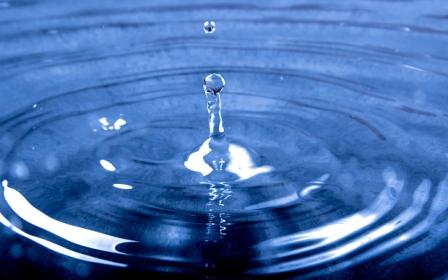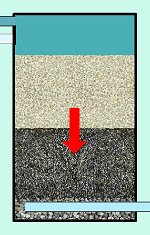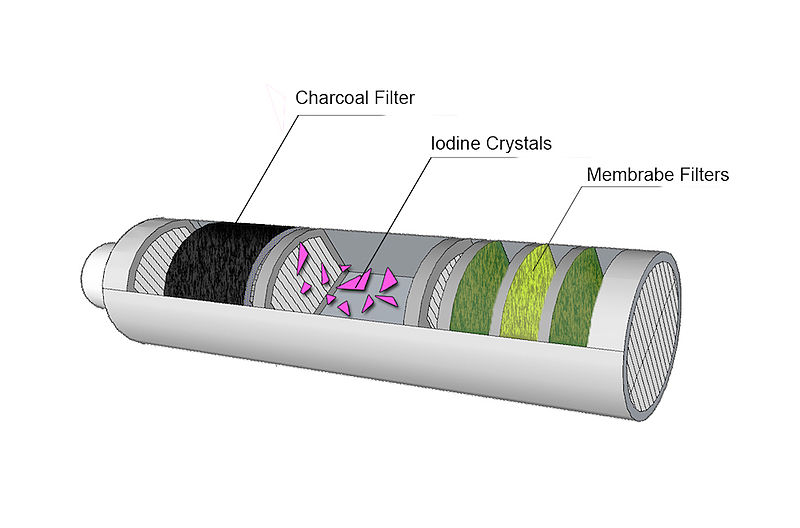Water Filtration System
A Water filtration system removes impurities from water by utilizing physical, chemical and biological processes. Considering the filter media, target contaminants and degree or purification desired; a wide range of filtration systems are available. Water filtration systems can be broadly divided into the following three groups based on their applications:

Water Filtration System for Water Treatment Plant:
Water treatment plants can use water filters to remove all sort of impurities including fine particles, smaller flocks, bacteria, protozoan cysts and even toxic chemicals like pesticides, nitrate, arsenic etc. Water filtration systems usually used at water and wastewater treatment plants are slow and rapid sand filtration system; membrane filtration systems (microfiltration, ultra-filtration, reverse osmosis, nano filtration) and different type of sheet, disk, screen and cloth filters.
Sand filtration systems are built by layering
different types of sands of different grain size and specific gravity. Water
passes through the filters and particulate contaminants get trapped between the
sand grains.

Water treatment membranes are thin material barrier that can separate contaminants based on their size or charge. Membrane filtration can be divided into two groups - micro and ultra filtration in one group and nano filtration and reverse osmosis in another group. When particulate contaminants like flocks, bacteria, viruses or other microorganisms have to be removed, micro or ultra filtrations are used. But when Salts and toxic chemicals have to be removed, nano filtration and reverse osmosis are applied. Water passes through the membrane but contaminants get separated out.
Activated carbon filtration is another common
filtration system used for water treatment. It is commonly used for removing
organic contaminants that are responsible for taste, odor and color. Activated
carbon's adsorptive properties are used to remove organics. Carbon particles
can also remove dissolve substances like hydrogen sulphide; heavy metals such
as lead, mercury and copper; and residual disinfectants like chlorine and chloramines.
Water filtration system for household use:
Several types of filtration systems are available for house hold use. They can be broadly divided into two groups:
Whole House/Point-of-Entry (POE) systems:
These types of filtration systems usually treat water
for the entire house. Point-of-Entry systems are usually installed at the main
water supply line to treat all the incoming water before it goes to any
individual supply line like kitchen, laundry, bathrooms etc. That is why they
are also known as the whole house water filtration system. These types of
systems usually include a variety of filter cartridges and media beds to remove
multiple types of impurities and contaminants. These systems are usually larger
in size and have higher treatment capacity.
Point-of-Use (POU) systems:
Point-of-Use (POU) filtration systems are usually installed in individual source lines to get better quality of water for drinking, cooking, bathing etc. Some of them may be installed inline while others may dispense filtered water through a separate faucet. POU systems are often a combination of a pre-filter, RO filter and a post-filter to capture whatever escapes the POE system. While most of these filters claim to produce drinking water, usually the reverse osmosis systems deliver the highest quality. Depending on the size of the unit, some POU filters will last only 3-6 months with others lasting up to 1 year or more
Examples of some POU systems are:
· Faucet Mount Filters
· Counter Top Filters
· Plumbed – in systems installed inline
· Refrigerator Filters to treat water and ice dispensed by a refrigerator
The household system needs regular maintenance to operate effectively. Operator manual should be followed and filter cartridges should be changed regularly.

Portable Water Filtration System:
A Portable water filter is required to produce safe drinking water from untreated natural sources (lake, river, ponds, ground water etc.). Natural water no matter how clean they look may contain deadly disease causing microorganisms and toxic chemical like heavy metals. A portable water filter removes some of these contaminates based on their capacity and ranges. Usually portable water filter has limited capacity and shorter life time. Portable water filter can be found in following types:
- A personal water bottle with built in water filter. These types of bottle may have a cap and a straw and designated for individual use.
- A pitcher or container with built in water filter. Dirty water passes through the filter by gravity to a separate compartment from where clean water can be poured or drawn.
- Straw type water filter when a membrane type filter is attached inside a pipe and water can be drink directly by putting the straw in the unclean water.
Know More about Water Filtration System Here.
Go Back to Clean Drinking Water!
Go Back to Home!
Total Visits to Site: